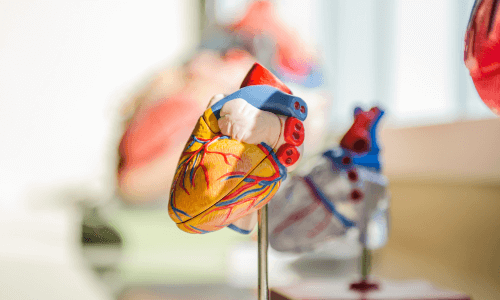Resolving Issues From Continuous Subcutaneous Insulin Infusion
Insulin pump therapy functions with multiple components including the pump, reservoir, insulin, infusion set and the user. All must work seamlessly to ensure healthy blood glucose levels.
Diabetes care and education specialists must be prepared to troubleshoot all aspects of insulin pump therapy and assist individuals when unexplained hyperglycemia occurs. In one randomized controlled trial involving several hundred insulin pump users,
more than two-thirds experienced unexplained hyperglycemia at least once per month. Sources of unexplained hyperglycemia may be of a mechanical, behavioral or physiologic/metabolic nature.
Given the multitude of factors that influence glycaemia, it is imperative that clinicians and people with diabetes develop effective problem-solving skills for detection, prevention and treatment of problems arising from continuous subcutaneous insulin
infusion. Following a step-by-step troubleshooting process can help prevent rapid deterioration of glucose management and avoid unnecessary/ineffective corrective measures.
TROUBLESHOOTING UNEXPLAINED HYPERGLYCEMIA, Consideration, Causes & Actions
Consideration #1: Verify that the pump is delivering insulin into the body
Possible Causes: Interruption of insulin delivery
Corrective/Preventative Action:
If the individual is vomiting or showing other symptoms of diabetic ketoacidosis aka DKA (extreme hyperglycemia, muscle aches, fruity breath, deep/labored breathing, delirium), advise them to call 911 and go to the emergency room immediately.
If not showing acute signs of DKA, advise the person with diabetes to check for ketones in blood; check urine if a blood ketone monitor is not available.
If ketones are present in significant amounts (≥ 0.6 mmol/L or greater than “trace”)
Instruct individuals to inject supplementary bolus via syringe or pen and enter the data into the pump (disconnect pump from infusion site, deliver equivalent bolus) so that insulin-on-board will be calculated properly.
Advise the individual to replace the infusion set and tubing, and use a fresh insulin vial to fill a new cartridge/reservoir.
Advise the individual to drink water to prevent dehydration and facilitate elimination of ketones via urination.
If ketones are NEGATIVE, they may bolus with the pump. Instruct to follow steps 1-3 above if glucose level does not decline within two hours.
Possible Causes: Insulin spoilage
Inquire about storage of the insulin vial currently being used. Exposure to elevated temperatures can result in partial or complete degradation. Exposure of the pump/tubing to high temperatures or direct sunlight can cause similar problems. Were there
circumstances (e.g., travel, beach, spa, items left in hot car) that could have exposed insulin to extreme temperatures?
If in doubt, suggest replacement of the insulin vial and/or changing the pump’s insulin cartridge and tubing. Educate the individual and caretakers on safe insulin storage.
Consideration #2: Verify that the pump is delivering insulin into the body.
Possible Causes: Incorrect insulin being used
Corrective/Preventative Action: Verify that the pump’s cartridge was filled with rapid-acting insulin, and not intermediate or long-acting/basal insulin.
Possible Causes: Pump settings are incorrect
Corrective/Preventative Action: Check the pump’s clock as well as basal and bolus calculation settings to ensure accuracy.
Possible Causes: Infusion set displacement
Corrective/Preventative Action: Even if taped to the skin, it is possible for the infusion set to displace. Examine the site for loose tape and moisture and see if an insulin “smell” is present. Change infusion set if displacement is detected
or suspected.
Consideration #3: Consider physiologic implications
Possible Causes: Menstrual cycle.
Corrective/Preventative Action: For several days prior to menses, many women experience elevated glucose levels. Consider using a secondary basal pattern until menstruation occurs.
Possible Causes: Illness/infection/injury
Assess overall health status; refer to primary physician if symptoms of illness are present. Consider use of temporary basal increase until symptoms diminish.
Possible Causes: New medication
Corrective/Preventative Action: Inquire about recent use of steroid medications / injections, elimination (or missed dose) of non-insulin diabetes medication, or the addition (or dose increase) of other medications that can raise glucose levels.
Possible Causes: Recent hypoglycemia
Corrective/Preventative Action: Elevated glucose could be the result of counterregulatory hormone production (“rebound”) or overtreatment of the low. Educate on proper treatment of hypoglycemia.
Consideration #4: Assess lifestyle changes
Possible Causes: Changes in eating patterns (higher fat foods, more frequent eating, larger portions)
Corrective/Preventative Action: Adjust/educate as indicated.
Possible Causes: Increased stress
Corrective/Preventative Action: Discuss stress management techniques. Refer for mental health counseling. Consider insulin adjustment (temporary basal increase) when stress is anticipated.
Possible Causes: Decrease in physical activity
Corrective/Preventative Action: A reduction in insulin sensitivity may be causing a marked glucose elevation. Discuss resuming normal activities or making adjustments to insulin doses until normal activity can resume.
Possible Causes: Anaerobic/competitive activities
Corrective/Preventative Action: Production of counterregulatory hormones during some forms of exercise can cause an acute rise in blood glucose. Supplementary insulin may be needed to prevent the rise.
Possible Causes: Changes in sleep cycle
Corrective/Preventative Action: Sleep deprivation may increase counterregulatory hormone production. Excessive sleep can impair insulin sensitivity. Refer to a sleep specialist; consider use of a secondary basal program until the problem is resolved.
Consideration #5: Screen for other sources of hyperglycemia
Possible Causes: Under-bolus (or missed bolus) for food
Corrective/Preventative Action: Evaluate carbohydrate content of recent meals/snacks. Evaluate/adjust bolus dose calculation formulas. Check pump history to confirm delivery of proper doses. (Re)Educate on carb counting technique, importance of bolusing
for all meals/ snacks, and proper bolus timing in relation to meals.
Under-bolus (or missed bolus) for food (continued). Unexpected/delayed glucose rises can occur in individuals with gastroparesis and following consumption of high-fat meals. Large amounts of dietary protein (or protein consumed in the absence of carbohydrate)
can also contribute to an unexpected glucose rise.
Possible Causes: Glucose meter inaccuracy
Corrective/Preventative Action: Verify that fingers were clean, proper testing procedures were followed, test strips were stored properly and are within the expiration date. Use control solution to confirm meter accuracy. Replace meter and strips
if outside of reference range.
Consideration #6: Recurrent infusion set/site issues require prompt attention and correction Some, but not all, are preventable through proper training/education.
Possible Causes: Bleeding
Corrective/Preventative Action: Mild, temporary bleeding at infusion sites may occur periodically. It is not typically dangerous, but it may result in malabsorption of insulin or clogging of the cannula.
At the first sign of blood at the infusion site or in the tubing, the individual should be instructed to change the infusion set and move to a new site. If certain body parts or sites are more prone to bleeding, people with diabetes should be advised
to avoid these areas.
Possible Causes: Highs after site changes
Corrective/Preventative Action If elevations in glucose occurs on a routine basis following infusion set changes, these strategies may help:
1. Change the infusion set prior to a meal and administer a full meal bolus soon after changing the set.
2. Ensure both tubing and catheter have been fully primed with each infusion set change.
3. Consider an extra small bolus once the new infusion set is in place.
4. Keep the old set on the skin for an hour or two to prevent leakage of recently administered insulin.
Possible Causes: Discomfort
Corrective/Preventative Action: For those who experience significant discomfort when inserting their infusion set, a number of options are available:
Inserting the infusion set needle (or introducer needle) in one quick step
Using a spring-loaded insertion device (ensuring the fastest, most precise insertion possible)
Switching to a shorter/higher-gauge introducer needle
Temporarily numbing the skin prior to insertion with ice or topical anesthetics containing lidocaine.
In some instances, a temporary “twinge” of pain can occur even with an infusion set that is properly inserted and working as designed. If the pain does not subside in an hour, the infusion set should be changed and moved to a new site.
For those who often experience prolonged pain after the infusion set has been inserted, relief can come from use of a short, flexible catheter (rather than a steel needle or longer cannula) and avoiding sites that are susceptible to frequent movement
or trauma.
Possible Causes: Frequent occlusions
Corrective/Preventative Action: If occlusion alarms occur more than once per month, it is possible that the pump’s pressure sensor is malfunctioning. Contact the pump manufacturer to troubleshoot. If the pump is functioning properly, consider
the following:
- Switch to a steel-needle infusion device or a flexible catheter that has multiple ports for ensuring uninterrupted insulin flow.
- Avoid using sites that are subject to pressure from restrictive clothing.
- Change to a site with more subcutaneous fat.
- Use a shorter catheter.
- Change the infusion set more frequently.
Possible Causes: Bent Cannula
Corrective/Preventative Action: Flexible catheters may bend below the skin if the infusion set is hit/pressed or if the cannula makes contact with flexing muscles. A bent cannula may or may not impede insulin flow, but it will almost always
result in skin irritation which, in turn can impair insulin absorption.
If bent cannulae are observed often when the infusion set is removed, individuals may be advised to:
- Choose a body part or site that has ample subcutaneous fat and is away from working muscles.
- (If using a 90-degree set): Switch to a shorter cannula or angled infusion set.
- (If using an angled set): Switch to a shorter cannula or insert at a sharper (shallower) angle.
- (If using any type of flexible catheter): Switch to a steel needle infusion set.


 Guidance on clinical assessment, adjustments, report interpretation and key education. Designed to be used during clinic visits.
Guidance on clinical assessment, adjustments, report interpretation and key education. Designed to be used during clinic visits.-(3).jpg?sfvrsn=16486d59_5)
 Proper basal insulin initiation and titration can help reduce therapeutic inertia and engage patients in their diabetes management. Find videos, podcasts and other resources to fine tune your knowledge.
Proper basal insulin initiation and titration can help reduce therapeutic inertia and engage patients in their diabetes management. Find videos, podcasts and other resources to fine tune your knowledge.
 An overview of Glycemic Management Platforms that answers key questions including: What are they? What to consider? How can my inpatient facility benefit and more.
An overview of Glycemic Management Platforms that answers key questions including: What are they? What to consider? How can my inpatient facility benefit and more.


 Certificate programs, webinars and courses related to cardiometabolic health and diabetes. Topics include weight loss, treatments, lifestyle enhancements, the latest technological advancements and more.
Certificate programs, webinars and courses related to cardiometabolic health and diabetes. Topics include weight loss, treatments, lifestyle enhancements, the latest technological advancements and more. Find danatech's interactive diabetes technology tools for point-of-care, insurance coverage and more.
Find danatech's interactive diabetes technology tools for point-of-care, insurance coverage and more.













